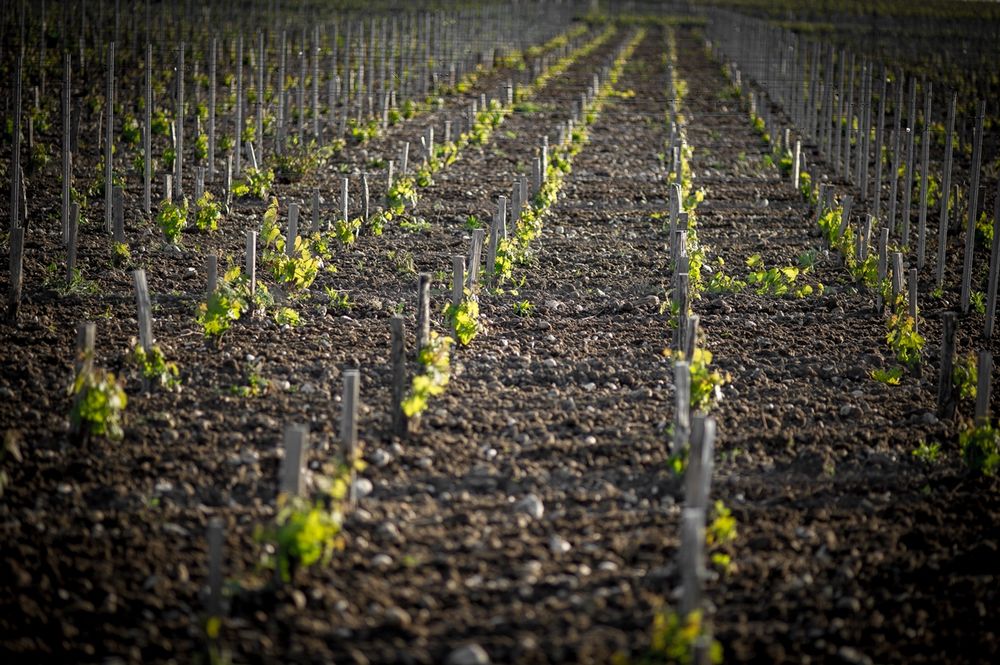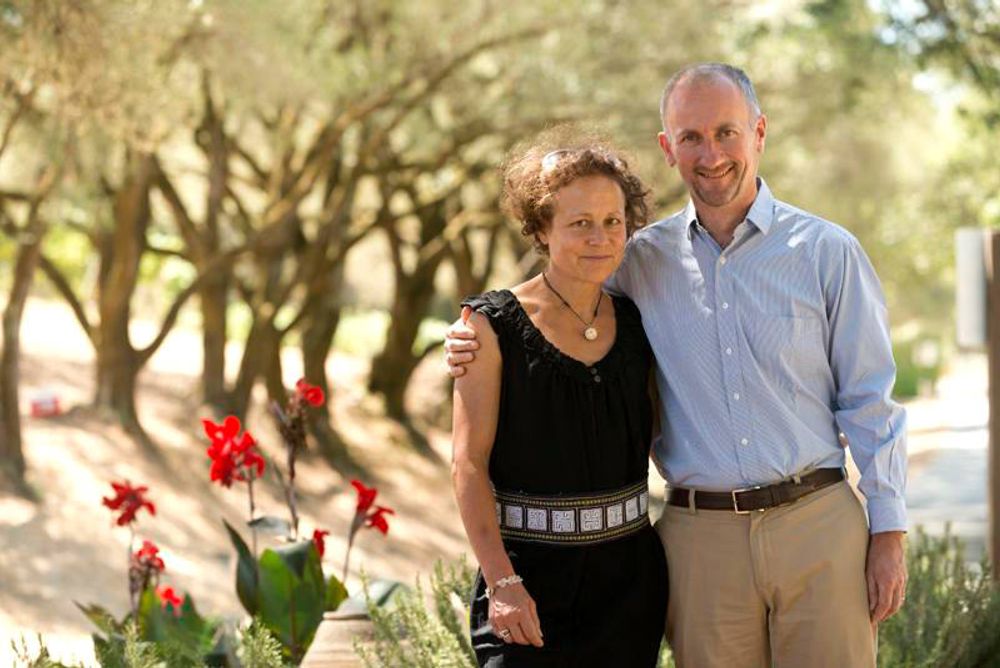“It was my dream as a young man, and it still is…” is how Gonzague Lurton looks at the opportunity to own and manage the fortunes of Bordeaux’s Château Durfort Vivens in Margaux.
Gonzague Lurton was born and raised in the vineyard, so it is unsurprising that this is where he remains, continuing the family legacy on his own estate, Château Durfort Vivens in Margaux. “When you are in a family who manages vineyards for generations, you are part of a story,” he says, “you learn from your father and grandfather and great grandfather”.
Though Lurton had briefly toyed with the world of finance, completing business school and starting a job in the city when his father, Lucien, told him he was looking to retire, his immediate response was, “Ok, I’m coming back”. He was born in Margaux and feels a strong connection to the region. He had also worked with Lucien previously and enjoyed the vineyards and winemaking but “my father was a very strong man,” says Lurton. “I wanted to come back when I was free to make the decisions”.
Lurton is one of 10 children and his father had bought many châteaux in the 1960s and 70s “when no one was really keen on Bordeaux Grand Crus, so he got some fantastic vineyards for nothing”. Wanting to divide his estate equally between his children, Lucien created 10 equal plots and asked them each to write down their first, second and third choices. Headstrong and determined from a young age, Lurton wrote Château Durfort Vivens down in every slot. It was Durfort Vivens, or nothing.
“It was my dream as a young man, and it still is,” says Lurton.

Château Durfort Vivens now claims to be the largest organic estate in Bordeaux
Despite being a 1855 classification second growth, Château Durfort Vivens had been largely neglected over the years. It needed a great deal of work to restore the cellars and vines, but Lurton saw all its magnificent potential. “I could realise my dream. I could work with the people I chose. Even years later, it is always the same excitement. Here, we are always thinking about what’s next”.
Drive to organics
Château Durfort Vivens is both organic and biodynamic certified and it claims to have been the first, and the largest, of the 1885 growth classification to be so. In this case, it was looking back at his family history that provided the inspiration to create innovation and change.
Lucien gave Lurton a book his grandfather had kept, detailing an organic way of working the vines and this proved just the jumping off point Lurton needed. “My father worked when everyone was working conventionally, when I said I wanted to move to organic and biodynamic winemaking he thought I was crazy,” he laughs. There may have been a little ‘domaine resistance’, especially as Lurton was also the youngest owner-manager of an 1855 Grand Cru Classé estate but “I am the only owner of my vineyard – I take my own risks,” he stresses.
Tasting some organic wines from Saint-Emilion, Lurton was impressed by their taste and quality and quickly embarked upon a process which he believed was as beneficial for the world as it was for the wine. It was incredibly important, he stresses, that the wine’s brilliant reputation remained unchanged. “We are famous, we have the responsibility of the Grand Cru Classé and we want to produce the best wines in the world,” he adds.

The focus for Gonzague Lurton has been on organic farming and winemaking
Producing wines biodynamically in the often wet region of Bordeaux is not without its challenges and in 2018 Château Durfort Vivens lost 80% of its crop to mildew. “You have to love the challenges,” claims Lurton. “Most of the people working in Bordeaux love a challenge and if you want to work in balance with nature [even more so] …you have to work with Mother Nature and what she gives you and if things go wrong – no one can fire me.”
Overall, however, it has been a huge success. Lurton speaks with real relish about how his grapes have more ripe fruit flavours, stronger floral aromas and none of the “green” tinge that can affect underripe Cabernet Sauvignon. His innovation continues in the vinification process.
Château Durfort Vivens has what it claims is the largest amphora cellar in the world. Although oak is traditional, Lurton found the terracotta amphora kept the wine’s floral aromas creating fresh, fruity wines with softer tannins. Once again forging his own path, he used gentler extraction and reduced the use of oak and sulphur claiming the “taste of our grapes is now so good we must keep that in the wine”. Lurton believes less sulphur results in wines that are delicious to drink when young, something that more consumers are after, but that they can also cellar for 20 to 30 years.

Amphora is key to producing the fresh, vibrant wines that Gonzague Lurton wants to make
During a recent visit to Bordeaux, a wine professional from China told him his wines were so good now, they would never age. “I told him to come back in 30 years and see,” says a confident Lurton. “Our wines are approachable, but they have the balance to age”.
From the New World to the Old World
Climate change is a factor across the world but here too, Lurton is thinking ahead, having bought a vineyard with his wife ,Claire, in hot California. Claire is also from an eminent wine dynasty and, together with their three children, they lived there for three years to develop the vineyard, where they brought their knowledge of Bordeaux winemaking but also learned how to cope with extreme heat “as this could be the future of Bordeaux”.
Though Lurton is optimistic about the ripeness of the fruit the warmer weather has brought, praising the more regular vintages of the last 20 years, he notes that abv percentages have risen from 11.5% to 13.5% in recent vintages and he is reflecting on what can be done to combat this change. “There won’t be one solution,” he says. “There will be many different details. How we work with the soil, experimenting with different varieties, our rootstocks. If you plant a vine now it will still be 10 or 15 years before it can be a Grand Cru, so this will be the story of a generation”.
That said the cooler summer of 2021 means the current vintage will be closer to the classic styles of 20th Century Bordeaux, with a nice maturity of tannins and a lower 12% abv.
Forward thinking
Now his main focus is to “work in a good and natural way” stating that the biggest solution to the carbon problem is agricultural and that “now that our fruit is so good, we need to develop the capacity of our soil”. Bordeaux may conjure images of stuffy tradition, but Lurton passionately believes that “more and more people here are developing new things and are forward thinking”. For him, there is no choice. “It is my culture and my way of living and I am allowed to have the possibility to realise it. When I improve the life of the vineyard, I improve the quality of my wine.”

Gonzague Lurton and his wife Claire are together looking to represent the new generation of Bordeaux winemakers
Through his long life in his vineyards, Lurton has come to appreciate a “lighter print” on his wines and to realise it’s not the stamp of the winemaker that counts the most, but rather terroir and quality of the fruit. “I think the richness of your wine comes from the grape. Each year we work less in the cellar and the wine is better. Little by little, we come back to something more natural, richer, more diverse and unique,” he says.
It is clear Lurton feels responsibility for many things, for his family’s legacy, for the wines he is creating, for the surrounding nature and reputation of Bordeaux and for planet as a whole, but he is also exciting and excited. He is a winemaker willing and able to go his own way and take risks to create what he passionately believes is better wine both in the glass and for the planet.
“You cannot say it is easy,” concludes Lurton, “and maybe there are other ways. I do not say I have the only way, but we have to inspire others and they can take our good ideas and develop them in their own way”.
Château Durfort-Vivens Cru Classé en 1885, Margaux 2015
90% Cabernet Sauvignon, 10% Merlot
13.5% abv
An exceptionally elegant wine with a heady floral aroma of violets, lilacs, dusky dark fruits and just a hint of sweet spice. Powerful on the palate, this is a mouthful of ripe blackberries and blueberries with a lick of liquorice, underpinned by a precise freshness and refined, structured tannins. An absolute treat for any table.
‘Vivens’ par Château Durfort-Vivens, Margaux 2015
73% Cabernet Sauvignon, 27% Merlot
13.5%
A beautifully rounded wine with supple tannins. The nose is all red cherries and violets with notes of cedarwood spice carrying through onto the palate with dark plums and subtle hints of leather and smoke.
- Château Durfort Vivens wines are available through Liberty Wines, Great Wine Co and Berry Bro’s & Rudd.
- Libby Zietsman-Brodie is wine columnist for City AM and you can follow her on social media at @Libby_Brodie on Twitter and @a_little_sip_of_me_time on Instagram.










































